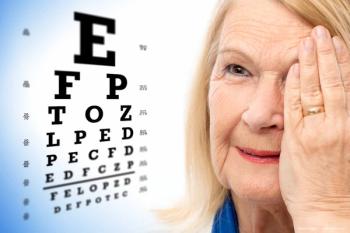
Steroid-induced CSC may only occur in vulnerable patients
Steroid-induced central serous chorioretinopathy (CSC) may only occur in select patients who are vulnerable, rather than having a dose-dependent effect, according to a recent study published in Investigative Ophthalmology & Visual Science
Steroid-induced central serous chorioretinopathy (CSC) may only occur in select patients who are vulnerable, rather than having a dose-dependent effect, according to a recent study published in Investigative Ophthalmology & Visual Science.
For this prospective, pilot study, researchers from the Seoul National University College of Medicine and Bundang Hospital measured choroidal thickness in 35 eyes in 18 patients treated with high-dose systemic corticosteroid pulse therapy (>500 mg/d) at baseline, 1 day, 1 week and 1 month after corticosteroids were administered. Blood pressures were measured four times daily for the first 5 days of treatment as well. High-dose corticosteroid therapy concentrations delivered were 19.5 mg/kg, for a mean of 5.2 days.
At baseline, the mean subfoveal choroidal thickness was 259.8 μm (range: 86.4 to 394.7 μm). No significant changes in choroidal thickness were seen at day 1, week 1, or month 1 after treatment (P = 0.117). In only one patient who presented at baseline with pigment epithelial detachment, bilateral focal subretinal fluid was seen and showed central serous chorioretinopathy, with a 13.1% increase in subfoveal choroidal thickness.
To view an abstract of this study, click
Newsletter
Get the essential updates shaping the future of pharma manufacturing and compliance—subscribe today to Pharmaceutical Technology and never miss a breakthrough.















































